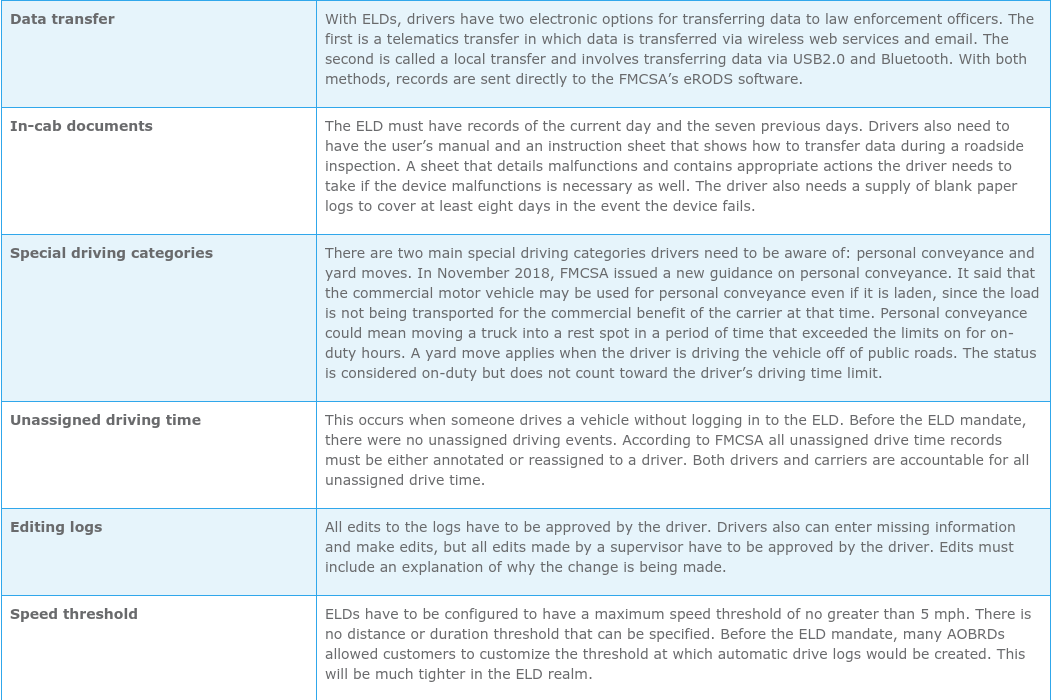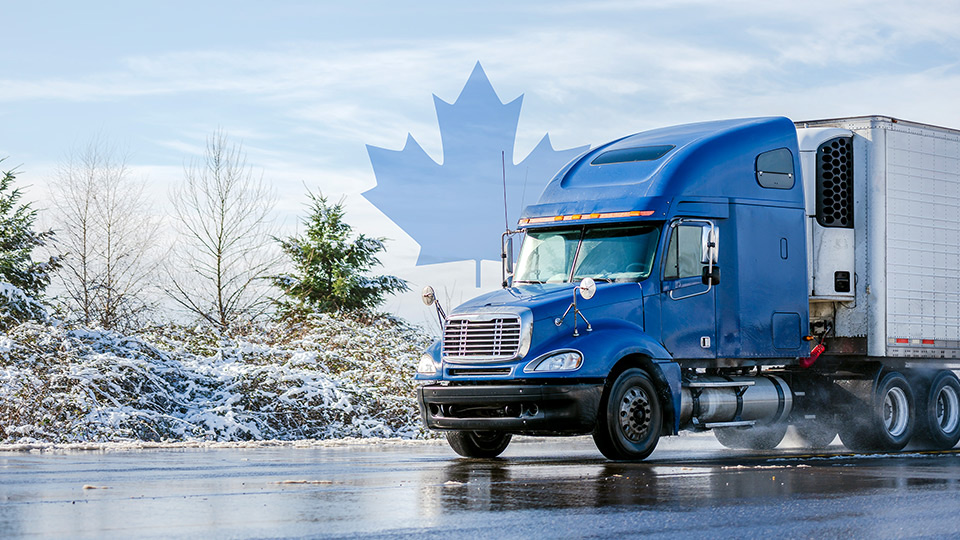
AOBRD vs ELD: What's the Difference?

Table of Contents
Introduction
The US Congress required the use of Electronic Logging Devices (ELDs). This action phased out Automatic On-Board Recording Devices (AOBRDs). This guide helps fleets transition smoothly to ELD regulations and improve fleet management practices.
Understanding the Transition
After December 16, 2019, all commercial vehicle drivers must use ELDs instead of AOBRDs to track their Hours of Service ensuring accurate recording of their record of duty status. Despite this deadline, ongoing compliance with ELD regulations remains critical for smooth fleet operations.
Key Differences Between AOBRDs and ELDs
ELDs offer significant advancements over AOBRDs (automatic onboarding recording devices), providing enhanced features and functionalities that improve overall efficiency and compliance. One major improvement is that the duty status changes to "On-Duty, Not Driving" automatically.
After the vehicle has been stopped for five minutes, the ELD initiates this change. This change occurs when the driver does not respond to an ELD prompt within one minute. This feature ensures accurate recording of a commercial driver activity and compliance with HOS regulations, a capability lacking in AOBRDs.
ELDs have great syncing capabilities, detailed location tracking, and visual displays of duty changes. This helps fleet managers get a clear view of driver activity and vehicle operations. ELDs also incorporate alerts for unassigned driving time and automatic status setting, streamlining record keeping and minimizing errors.
ELDs help manage fleets and follow regulations, making them the top choice for transportation companies Additionally, ELDs synchronize time to Universal Coordinated Time and feature robust tamper resistance, safeguarding data integrity and ensuring compliance with regulatory standards, while phasing out outdated methods such as paper logs.
In contrast, AOBRDs lack many of the advanced features found in ELDs and do not automatically record or display as much data. While both devices serve the purpose of recording driver activity, ELDs offer superior functionality and compliance capabilities, particularly in scenarios such as roadside inspections and driver's log management.
AOBRD vs. ELD — more differences

ELD Technical Overview
ELDs record various information such as date, time, location of the vehicle, engine runtime, distance traveled, driver details, and carrier information. This includes recording the date and time, as well as the location of the vehicle.
Additionally, ELDs track how long the engine runs and how far the vehicle travels. They also store driver details and carrier information. The FMCSA requires certain features like automatic status updates, tracking vehicle locations, creating user accounts, and manufacturers certifying their own products.
Optimizing ELD Implementation
Fleets can optimize ELD usage through comprehensive training, continuous support, feedback mechanisms, promotion of adoption, and regular monitoring and evaluation. Effective implementation strategies ensure compliance and enhance operational efficiency.
Ensuring Successful ELD Deployment
Successful ELD deployment requires thorough pre-deployment preparations, driver onboarding, ongoing training and support, and compliance monitoring and review. By following these steps, fleets can achieve seamless integration of ELDs into their operations.
Training Tips for ELD Usage
Teaching drivers about automatic duty status limits is important. They also need to learn how to transfer data and deal with ELD issues. Making log edits and switching from AOBRDs to ELDs step by step can help make the transition easier. Ongoing training and support are essential for sustained compliance and proficiency.
Embracing ELDs for Enhanced Fleet Management
Transitioning to ELDs presents an opportunity for fleets to enhance efficiency, compliance, and overall success in fleet management. Embracing ELD technology unlocks new opportunities for optimization and ensures alignment with regulatory standards.
Conclusion
While the transition from AOBRDs to ELDs may seem like a thing of the past (since Dec 16 2019), it marks an important milestone in fleet management history. Today, the focus is on maintaining compliance with ELD regulations and optimizing their use to enhance fleet operations. By prioritizing ongoing training, compliance monitoring, and embracing advanced ELD features, fleets can continue to benefit from these technologies. It's important to keep up with regulatory changes and use ELDs to improve efficiency and compliance in fleet management.
For more information on ELD solutions, please visit: https://www.geotab.com/fleet-management-solutions/eld/
References
Post Tags
About Geotab
Geotab is a global leader in connected vehicle and asset solutions, empowering fleet efficiency and management. We leverage advanced data analytics and AI to transform fleet performance, safety, and sustainability, reducing cost and driving efficiency. Backed by top data scientists and engineers, we serve over 55,000 global customers, processing 80 billion data points daily from more than 4.7 million vehicle subscriptions. Geotab is trusted by Fortune 500 organizations, mid-sized fleets, and the largest public sector fleets in the world, including the US Federal Government. Committed to data security and privacy, we hold FIPS 140-3 and FedRAMP authorizations. Our open platform, ecosystem of outstanding partners, and Marketplace deliver hundreds of fleet-ready third-party solutions. This year, we're celebrating 25 years of innovation. Learn more at www.geotab.com and follow us on LinkedIn or visit Geotab News and Views.
© 2025 Geotab Inc.All Rights Reserved.
This white paper is intended to provide information and encourage discussion on topics of interest to the telematics community. Geotab is not providing technical, professional or legal advice through this white paper. While every effort has been made to ensure that the information in this white paper is timely and accurate, errors and omissions may occur, and the information presented here may become out-of-date with the passage of time.
Recent News

When is the right time to switch out your ELD?
June 29, 2022

Your comprehensive guide to the Canadian ELD mandate
May 16, 2022

Combating rising fuel prices with fuel performance incentives
April 28, 2022
.jpg)
Customizing mobile workflow and fleet management to better serve drivers
June 5, 2020